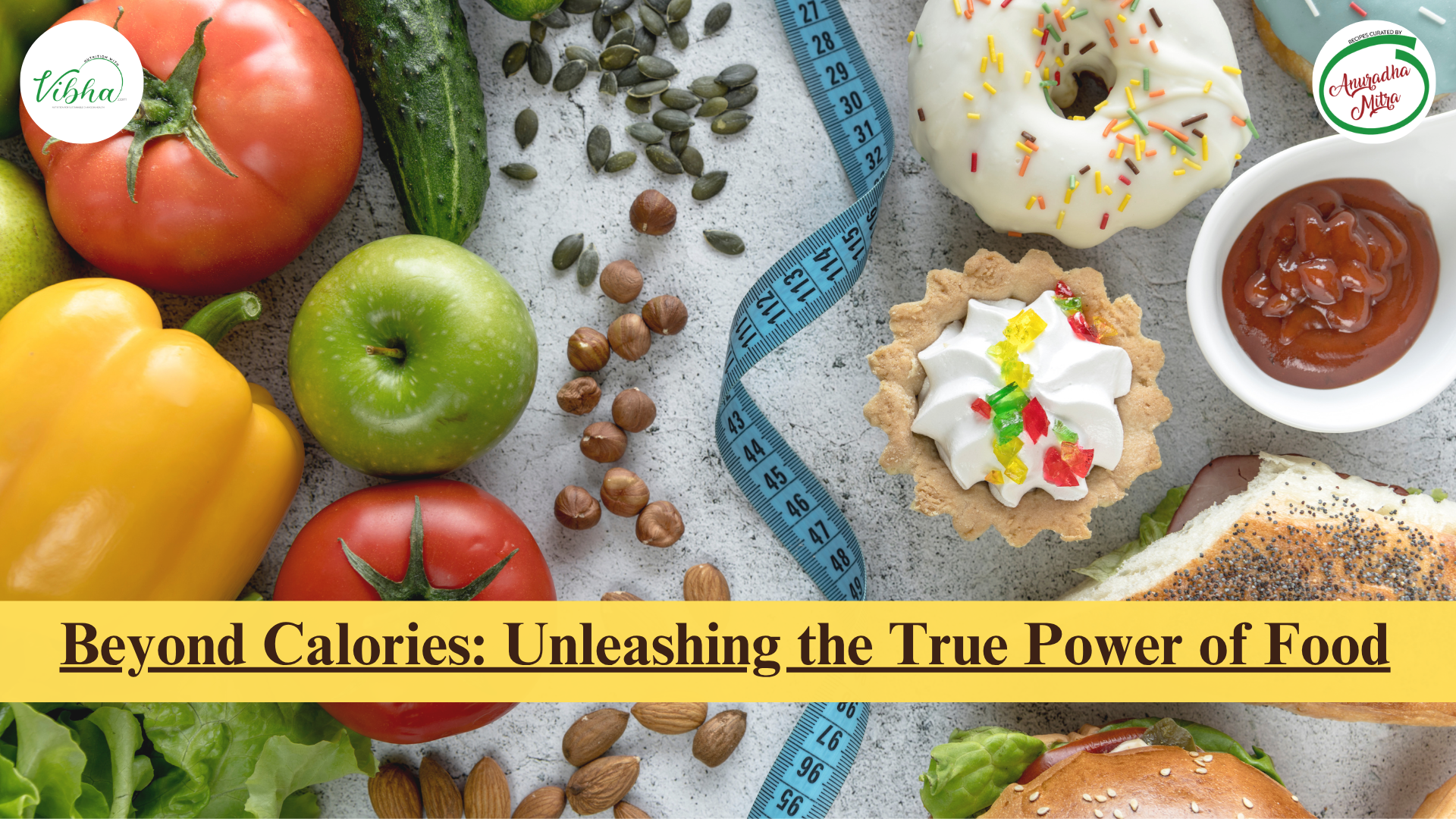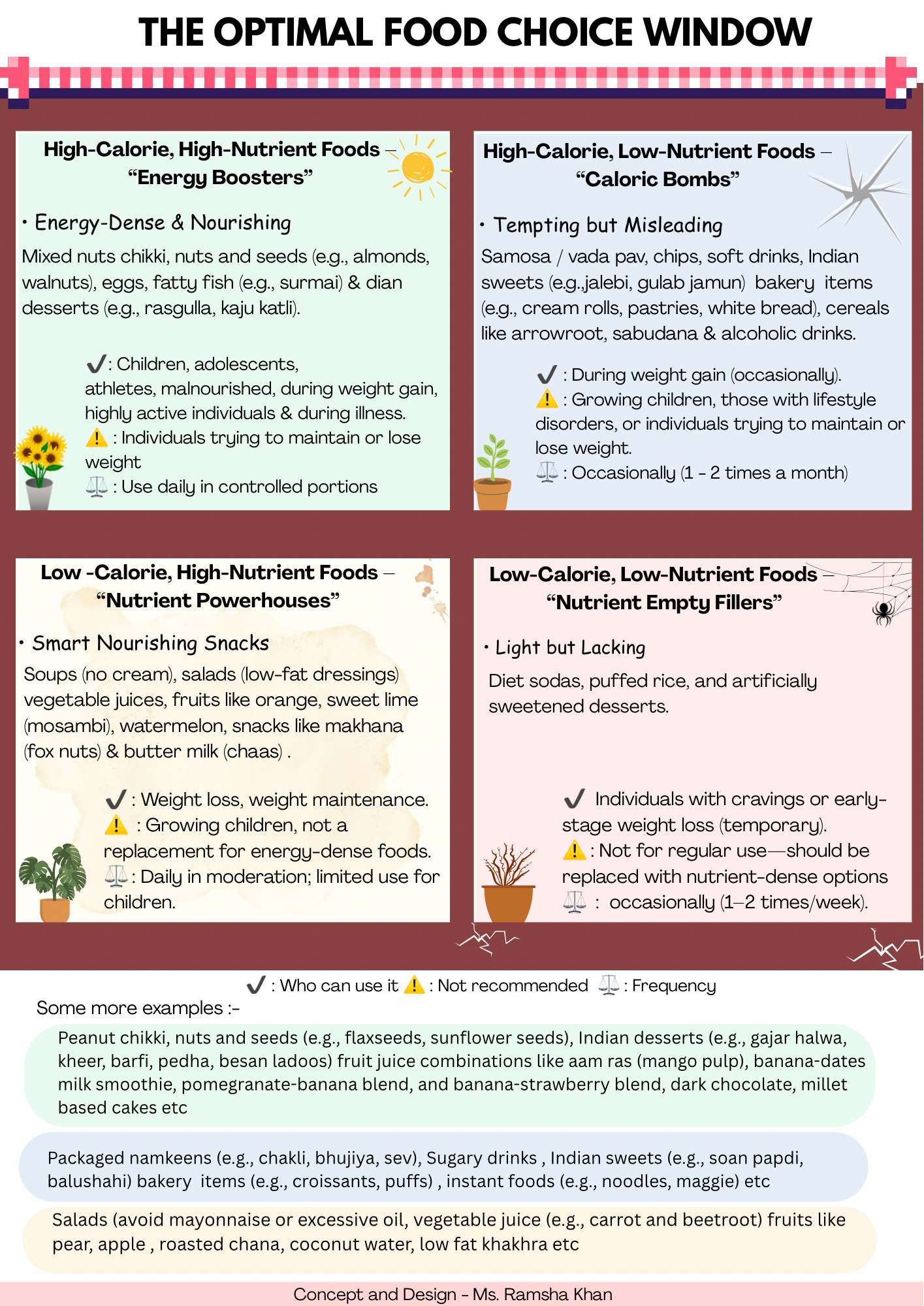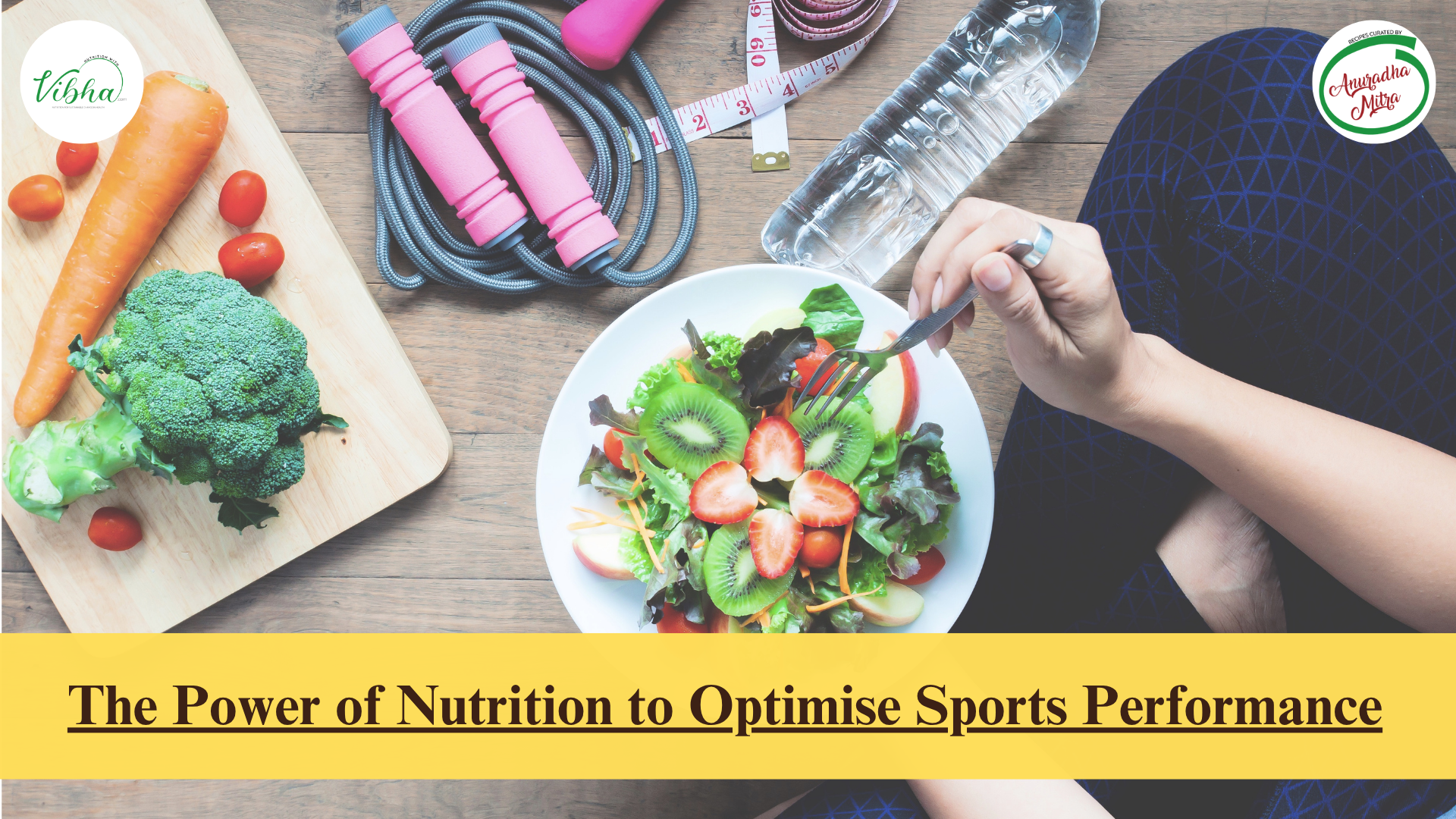Beyond Calories: Unleashing the True Power of Food

Imagine meticulously counting every calorie, celebrating small victories when you stick to your daily limit, only to feel sluggish, irritable, or downright unhealthy. Sound familiar? The truth is, while calorie counting can help with weight management, it often overlooks something far more important – nutrition quality.
In this blog, we’ll explore why focusing solely on calories might be sabotaging your health and how embracing a more holistic approach can transform your well-being. Ready to go beyond the numbers? Let’s dive in!
The Calorie Counting Conundrum
When it comes to nutrition, not all calories are created equal, especially when ultra-processed foods (UPFs) enter the picture. These calorie-dense yet nutrient-poor foods, like chips, burgers, and sugary drinks, have become increasingly prevalent among India’s youth, as highlighted in Preety Sharma’s article “Curbing India’s Ultra-Processed Foods”¹. While calorie counting may seem effective for weight management, relying on UPFs within a calorie limit can still lead to nutritional deficiencies and poor metabolic health. Unlike whole, nutrient-dense foods, UPFs are high in added sugars, unhealthy fats, and sodium—factors linked to weight gain and metabolic disorders². This growing public health concern has prompted initiatives like the Indian Nutrient Databank (INDB) by the Indian Council of Medical Research-National Institute of Nutrition, aimed at promoting informed dietary choices and curbing the rise of non-communicable diseases³.
Calories measure the energy content in food, but they say nothing about the quality or nutritional value of what you eat. For instance, a 100-calorie serving of potato chips and a 100-calorie serving of vegetables provide vastly different benefits to your body⁴. While the chips offer empty calories mostly from refined carbs and fats, the vegetables are packed with vitamins, minerals, fiber, and antioxidants⁵.
Nutrient Density: A Better Metric
Nutrient density refers to the concentration of essential nutrients relative to the calorie content. Foods that are nutrient-dense offer more vitamins, minerals, and beneficial compounds per calorie⁶. Leafy greens, lean proteins, whole grains, and legumes are prime examples. By prioritizing these foods, you nourish your body more effectively than by merely cutting calories.
Why Calorie Counting Falls Short
- Quality Matters More: A diet focused on calorie restriction can inadvertently lead to choices that are low in fiber and essential nutrients. This can compromise gut health, immune function, and energy levels⁷.
- Satiety and Satisfaction: Nutrient-dense foods help keep you full longer, reducing the likelihood of overeating. In contrast, calorie-dense, low-nutrient options can lead to cravings and binge eating⁸.
- Metabolic Impact: Foods high in refined sugars and fats, despite being calorie-controlled, can disrupt insulin sensitivity and promote inflammation⁹. Whole foods, on the other hand, support metabolic health¹⁰.
To promote healthier eating habits, it’s essential to move beyond mere calorie counting and focus on nutrient density, prioritizing whole, minimally processed foods that truly nourish and sustain the body.
Making informed food choices requires understanding the nutritional value of foods and how they affect your overall health.
- Educate Yourself on Nutrients
Understanding macronutrients (carbohydrates, proteins, fats) and micronutrients (vitamins, minerals) is essential. Utilizing tools like the MyPlate Plan¹¹ can help you determine appropriate portions and balance in your meals. - Read Food Labels Carefully
Examining food labels allows you to assess the nutritional content of products. Look for items low in added sugars, saturated fats, and sodium, and high in essential nutrients like fiber, vitamins, and minerals¹². - Plan Meals Ahead
Planning meals ensures a variety of foods from different food groups, promoting a wide range of nutrient intake. This practice also helps in making healthier choices and avoiding impulsive eating¹³. - To prioritize nutrient density in your diet:
- Choose Whole Foods: Opt for fruits, vegetables, whole grains, lean proteins, and healthy fats.
- Limit Ultra-Processed Foods: Reduce intake of packaged snacks, sugary beverages, and fast food¹⁴.
By focusing on the quality of your calories, you can ensure your body receives the nutrients it needs for optimal function.
The Calorie-Nutrient Window: A Fresh Perspective
To truly understand the impact of our food choices, it helps to think beyond numbers and labels. One helpful way to visualize this is by applying a framework inspired by the Johari Window, traditionally used to explore self-awareness to nutrition. In this model, foods are grouped based on two key criteria: their calorie content (low or high) and their nutrient density (low or high). This gives us four categories of foods…
1. High-Calorie, High-Nutrient Foods – “Energy Boosters”:
Perfect for people needing more energy (such as children, adolescents, athletes, or individuals recovering from illness), these foods are dense in both calories and nutrients. They support muscle growth, brain health, and overall vitality.
Examples: Mixed nuts chikki and peanut chikki, nuts and seeds (e.g., almonds, walnuts, flaxseeds, sunflower seeds), eggs and fatty fish like surmai (kingfish), traditional Indian desserts such as rasgulla, gajar halwa, kaju katli, kheer, barfi, pedha, and besan laddoos, along with fruit juice combinations like aam ras (mango pulp), banana-dates milk smoothie, pomegranate-banana blend, and banana-strawberry blend, dark chocolate, millet-based cake, etc.
These foods provide a concentrated source of calories, healthy fats, proteins, and micronutrients.
Who can use them?
Children and adolescents (for growth and development),
Malnourished individuals,
People aiming for healthy weight gain,
Those involved in extensive physical activity,
Athletes,
Individuals recovering from illness or surgery.
Frequency:
Daily, but with controlled portion sizes to avoid excessive calorie intake
Portion Size:
Nuts/seeds: A small handful (15-20 g)
Chikki: 1 small piece (20-30 g)
Indian sweets: 1 small serving (30 g)
Fruit juice combinations: ½ glass (125ml)
Fatty fish: 1 medium fillet (100 g)
Eggs: 1–2 per day (50g)
Dark chocolate: 1 small square (15 g)
2. High-Calorie, Low-Nutrient Foods – “Caloric Bombs”
These are the foods we often crave but should consume sparingly. They’re high in sugar, refined fats, and additives while offering very little in terms of essential nutrients. Regular consumption can contribute to weight gain and chronic disease.
Examples: Samosa pav/vada pav, chips and packaged namkeens, sugary drinks and soft drinks, Indian sweets like jalebi, gulab jamun, soan papdi, balushahi, bakery items such as cream rolls, pastries, croissants, puffs, white bread, certain cereals like arrowroot, sabudana and alcohol containing drinks, etc
These items are generally not recommended for regular consumption, especially when aiming for balanced nutrition, as they contain refined flour, high sugar, low in micronutrients and fiber.
Who can use them?
May be used occasionally by individuals aiming for weight gain,
It should not be encouraged for growing children, people with lifestyle disorders, or those trying to maintain or reduce weight.
Frequency:
Occasionally only (e.g., 1–2 times a month),
Whenever possible, replace with high-calorie, high-nutrient foods.
Portion Size:
Samosa/vada pav: 1 piece
Chips/namkeen: A small packet (30 g)
Mithai: 1 small piece (25g)
Soft drink: ½ can (150)
Bakery items: 1 small portion or slice
Arrowroot/ Sabudana: 1 serving size (30g)
3. Low-Calorie, High-Nutrient Foods – “Nutrient Powerhouses”
These are the ideal choices for those looking to nourish their bodies while managing weight. Packed with vitamins, minerals, fiber, and antioxidants, they support metabolic health without overloading on calories.
Examples : Soups made without cream, salads with low-fat dressings (avoid mayonnaise or excessive oil), vegetable juices – rich in vitamins but low in fiber, fruits like orange, sweet lime (mosambi), watermelon, pear, apple, snacks like makhana (fox nuts), low-fat khakhra, Buttermilk (chaas) etc
These foods help satisfy mid-meal hunger while providing nourishment with fewer calories.
Who can use them?
Everyone, especially those on a weight loss journey, and for maintaining weight,
For growing children and adolescents, these can be used occasionally for snacking, but should not replace more energy-dense foods needed for growth and development.
Frequency: Daily
Moderate consumption for children it should not be considered as a common choice for children.
Portion Size:
Soups/juices: 1 small bowl or glass (150–250 ml)
Fruits: 1 medium-sized fruit
Makhana/khakhra: A small handful (30 g)
Buttermilk: 1 glass (250 ml)
4. Low-Calorie, Low-Nutrient Foods – “Nutrient Empty Fillers”
These foods are often chosen for their low calorie count but offer little to no nutritional value. They’re typically ultra-processed, lacking essential nutrients like fiber, vitamins, or minerals. Though they might seem diet-friendly, they don’t provide sustained energy or health benefits.
Examples : Diet sodas, puffed rice, and artificially sweetened desserts.
Artificial sweeteners such as aspartame, sucralose, and saccharin are commonly used in these products. They are high-intensity sweeteners that provide sweetness without calories. However, regular and long-term use is not considered sustainable for overall health, and should be used with awareness and moderation.
Who can use them?
Individuals experiencing cravings purely for taste,
People in the early stages of weight loss as a temporary support.
Frequency: Occasionally, not more than once or twice a week.
Ideally, they should be replaced with more nutrient-dense alternatives over time.
Portion Size:
Diet soda: 1 can (300 ml)
Puffed rice: 1 small bowl (30 g)
Artificially sweetened dessert: 1 small serving (30g)
By recognizing which quadrant your food choices fall into, you can make more informed decisions that balance energy needs with nutritional value. It’s not just about how many calories you consume; it’s about what those calories are doing for your body.

While calorie counting can offer a basic framework for weight management, it falls short in promoting overall health. Emphasizing nutrient density ensures that each calorie consumed contributes to your body’s nutritional needs. By making informed food choices that prioritize nutrient-rich options, you can achieve a balanced diet that supports both your weight and wellness goals.
Moving beyond calorie counting doesn’t mean disregarding energy balance entirely. Instead, it means prioritizing foods that support long-term health. When you choose nutrient-dense options, you naturally consume fewer empty calories, fostering sustainable eating habits that go beyond temporary weight loss.
We hope this information has been helpful on your wellness journey. If you have any questions or need further guidance, don’t hesitate to write to us—we’re here to support you. For personalized consultations tailored specifically to your needs, feel free to connect with us anytime. Your health and happiness matter to us!
Stay Empowered
Stay Nourished
Stay Blessed
References
- Bose, M., & Shetty, V. (2022). Curbing India’s ultra-processed foods. Think Global Health. https://www.thinkglobalhealth.org/article/curbing-indias-ultra-processed-foods
- Jackson, A., & Millstone, E. (2022). Number crunching: Why ultra-processed foods have a calorie problem. The Guardian. https://www.theguardian.com/lifeandstyle/2022/may/17/number-crunching-why-ultra-processed-foods-have-a-calorie-problem
- National Institutes of Health. (n.d.). Comparison of high-calorie, low-nutrient-dense food consumption. https://pubmed.ncbi.nlm.nih.gov
- Harvard Health Publishing. (n.d.). Stop counting calories. Harvard Health. https://www.health.harvard.edu/staying-healthy/stop-counting-calories
- Mayo Clinic Health System. (n.d.). Make every calorie count with nutrient-dense foods. https://www.mayoclinichealthsystem.org
- Baum, J. I., & Wolfe, R. R. (2024). Understanding nutrient density: A key to making better food choices. Current Developments in Nutrition, 8(4), 103790. https://doi.org/10.1016/j.cdnut.2024.103790
- Healthline. (n.d.). The risks of calorie restriction. https://www.healthline.com/nutrition/calorie-restriction-risks
- Aylo Health. (n.d.). https://aylohealth.com/
- Medical News Today. (n.d.). Calorie-dense foods: Needs, healthy options, and more. https://www.medicalnewstoday.com/articles/calorie-dense-foods
- PubMed Central (PMC). (n.d.). https://pmc.ncbi.nlm.nih.gov/articles/PMC5108694/
- MyPlate Plan. (n.d.). U.S. Department of Agriculture. https://www.myplate.gov/myplate-plan
- Healthline. (n.d.). 22 foods that are very low in calories. https://www.healthline.com/nutrition/20-foods-that-are-almost-zero-calories
- Healthline. (n.d.). The 18 best healthful foods to gain weight fast. https://www.healthline.com/nutrition/how-to-gain-weight
- Healthline. (n.d.). The risks of calorie restriction. https://www.healthline.com/nutrition/calorie-restriction-risks





